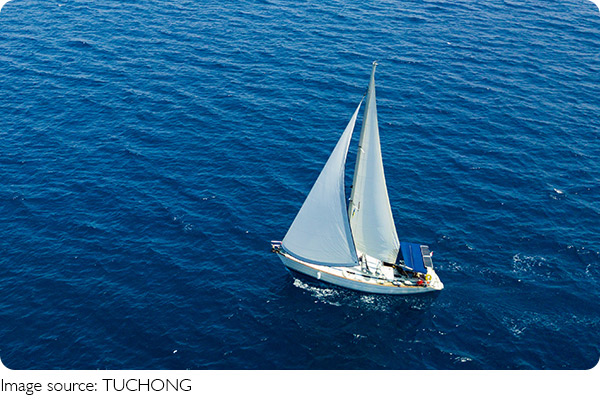Sails And Soars

While traditional sailing relied purely on wind power, modern advancements have led to more efficient and dynamic uses of this natural force.
In ancient eras, sailboats were equipped with expansive canvas sails and towering masts, strategically positioned at the boat's center to maximize exposure to the wind.
However, the evolution of sailboats is evident in the prevalence of vessels, like dhows, that no longer rely solely on wind power. Modern dhows, with sails erected in the boat's center, demonstrate an ability to sail swiftly even against the wind. The key to this paradox lies in a fundamental principle of fluid dynamics known as the Bernoulli effect.
Let's delve into the origin of the Bernoulli effect by introducing its discoverer, Daniel Bernoulli. A distinguished Swiss mathematician and physicist, Daniel Bernoulli made significant contributions across various mathematical disciplines, including algebra, calculus, series theory, differential equations, and probability theory.
However, his most noteworthy work involved applying calculus and differential equations to physics, particularly in the study of fluid mechanics, object vibrations, and oscillations. Revered as the founder of the mathematical approach to physics, Bernoulli's pioneering contributions extend to the fields of fluid mechanics, probability, and mathematical statistics.
The Bernoulli effect, also referred to as the boundary layer surface effect, is a fundamental phenomenon applicable to all ideal fluids, including liquids and gases. It reflects the relationship between the pressure and flow velocity of a fluid during steady flow.
Simply put, as the flow velocity of a fluid increases, the pressure decreases, and vice versa. This principle is at the core of what propels sailboats, airplanes, birds, and even certain sports.
In the context of sailing, the Bernoulli effect is notably harnessed by dhows. Despite sailing upwind, a dhow's curved sail prompts the wind to navigate around it. This results in higher wind speed and lower pressure on the windward side, and lower wind speed with higher pressure on the leeward side.
The pressure differential propels the boat towards the side with greater pressure, facilitating movement even against the wind. The Bernoulli effect is also active at various angles and conditions, particularly when sailing downwind.
Navigating with the Bernoulli effect necessitates adopting a zigzag pattern to optimize forward movement, showcasing the dynamic interplay between wind and sail. Adjusting angles while sailing upwind further enhances forward speed.

Beyond sailing, the Bernoulli effect finds application in various sports. In table tennis, for example, the topspin ball is an attacking shot characterized by its aggression, short attacking distance, and expansive arc of ball flight.
The topspin ball's rotation upwards, forming a circulation on its surface, interacts with air resistance during flight.
The resulting Bernoulli effect creates a downward force and acceleration, making it a formidable weapon in the arsenal of table tennis players, particularly those in our country who have expertly mastered its application. A similar application is observed in soccer with the banana ball.
Airplanes and birds owe their flight capabilities to the Bernoulli effect. Observing airplane wings, they are flat on the bottom and bulging on the top, a design that amplifies the Bernoulli effect. Even the fuselage of an airplane adheres to this design principle, enhancing the overall aerodynamics and efficiency of flight.
The Bernoulli effect, rooted in fluid dynamics, has far-reaching implications across diverse domains. From sailing against the wind to powering topspin shots in sports, and facilitating flight in airplanes and birds, this fundamental principle continues to shape and define various aspects of our technological and sporting endeavors.

 · Vehicle Team
· Vehicle Team